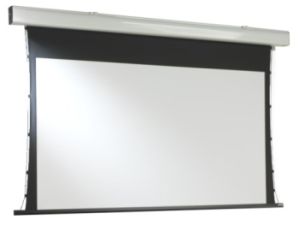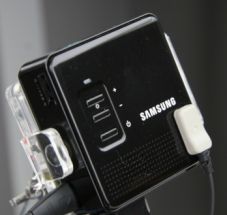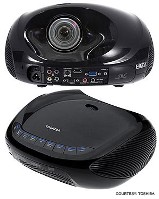 The quick answer is that most projectors are perfectly fine and produce a satisfying image on a plain white wall. However, those who want the best possible looking image will opt for a screen. In this HD driven market, high definition projectors are becoming cheaper and giving the consumer a few more dollars to ensure that their projector is producing the best image possible. But the question remains. Just how much will the image benefit from getting a screen?
The quick answer is that most projectors are perfectly fine and produce a satisfying image on a plain white wall. However, those who want the best possible looking image will opt for a screen. In this HD driven market, high definition projectors are becoming cheaper and giving the consumer a few more dollars to ensure that their projector is producing the best image possible. But the question remains. Just how much will the image benefit from getting a screen?Originally screens were developed to reflect more light from the projector and increase the brightness of the image. Today, projectors that are less than 1000 lumens are no longer being developed for business purposes and are even less common in home theater projectors. Currently white matte screens are the most popular type of screen keeping a bright, clear, and all around easy to see picture which works extremely well with already bright machines.
In home theater systems, gray screens have become all the rave because they improve contrast ratios providing deeper blacks, brighter whites, and richer colors. These screens also work extremely well in rooms where there is a small amount of ambient light as they will reflect less glare. Gray screens also minimize the appearance of the spaces in between pixels, which are black, and occur in both LCD and DLP projectors.
While there is no significant price difference between a gray screen or a white matte screen, they are both designed for completely different environments, room configurations, and projectors. When considering the two, it may be best to consult a projector expert who can help determine which screen would most benefit you.





 Samsung has taken the next step in innovative mobile technology and has created the MBP Micro Projector. This little gadget projects a 10 ansi lumen beam and comes in a box measuring 2.8x2.8x2.1 inches, about the size of a cigarette pack, and produces an image that can reach up to 50" in size.
Samsung has taken the next step in innovative mobile technology and has created the MBP Micro Projector. This little gadget projects a 10 ansi lumen beam and comes in a box measuring 2.8x2.8x2.1 inches, about the size of a cigarette pack, and produces an image that can reach up to 50" in size.  New Projector Technologies are Now Available For Use In Projector Rentals
New Projector Technologies are Now Available For Use In Projector Rentals